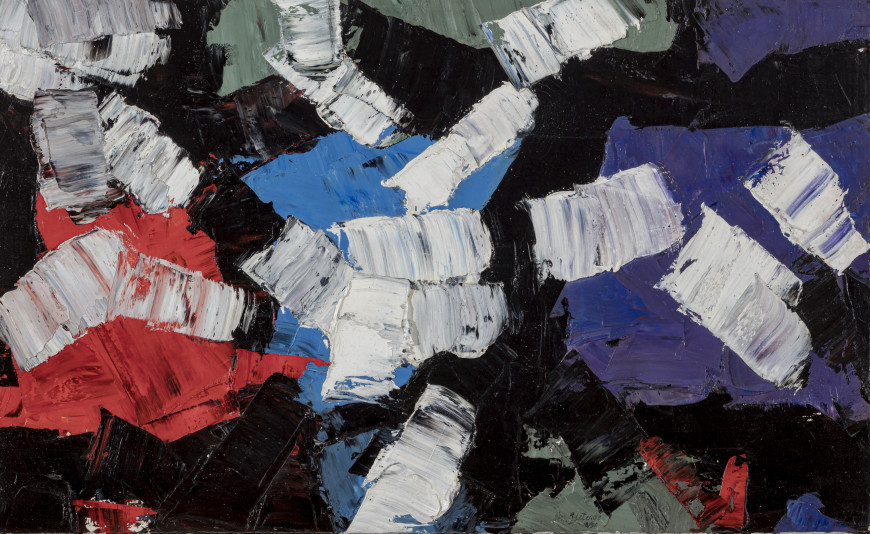-
Artworks
Rita LetendreOrbites, 19581928-Oil on canvas18 x 30 in
45.7 x 76.2 cmSoldInscriptions
signed and dated, ‘R. Letendre / 10/58’ (recto, lower right); signed and dated ‘RITA LETENDRE 10/58’ (verso, lower horizontal stretcher); artist label ‘RITA LETENDRE / Huile 18 x 30 / ORBITES’ (verso, lower horizontal stretcher)Provenance
Private Collection, Montreal.Now in her nineties, Rita Letendre is one of the more celebrated living artists in Canada. Of Abenaki and Québecois heritage, she studied art with Paul-Émile Borduas in Montreal and exhibited with the avant-garde alliance Les Automatistes in the 1950s. Her abilities as an abstract painter were consolidated when Letendre exhibited with the artists who formed Quebec’s next influential group of abstractionists, Les Plasticiens. Among many other awards, Letendre has been recognized with the Order of Quebec (2002) and became an Officer of the Order of Canada in 2005. In 2010 she was honoured with the Governor General’s Award in Visual and Media Arts. Letendre moved to Toronto in 1969. Very recently, two major exhibitions in and near Toronto have underlined the significance of her work: Rita Letendre: Fire and Light at the Art Gallery of Ontario in 2017, and Rita Letendre: Earth, Wind & Fire at the McMichael Canadian Art Collection in 2019.
Orbites of 1958 is a strong example of Letendre’s early directions in abstraction; in fact, she began to win painting prizes in Quebec in the following year with this approach. Drawing from Borduas’s powerful gestural work, itself an elaboration of the ‘automatic’ tenets of Surrealism, she uses a bold impasto to assemble the painting’s surface. In retrospect, her title reminds us that she was very much in the orbit of the most radical painting in Canada at this time. As her title also suggests, the textures and forms of this thick pigment are themselves in motion. Shapes move constantly through the space of the canvas and even out towards us. Letendre’s vibrant palette and full tonal range assures this ceaseless energy: white forms seem to play atop saturated blues, reds, and purples. These in turn move out from a fundament of grey and black.
The quality of this canvas emerges as we look more closely at its structure. We can easily imagine Letendre’s use of the blade of her palette knife as she carves colour. Most of the passages in black, grey, and purple have clean edges and are largely unmixed in hue. Akin to Automatiste Jean-Paul Riopelle’s contemporary faceted forms, however, her use of white –dragged across the other colours of underlying areas – further enlivens the physical and optical effects of the surface by blending forms and hues that are, in other areas, kept separate. We readily understand that Letendre values spontaneity. Remarkably, the result is at once seemingly intuitive yet purposefully scaffolded. The unconscious realm that Surrealism hoped to access and reveal was not unstructured.
Describing Letendre’s work from the late 1950s and early 1960s, emphasized in the McMichael Canadian Art Collection exhibition in 2019, chief curator Sarah Milroy extolled their “elemental” qualities, which “feel like the forces of nature.” Orbites exudes what may be a universal vitality of this sort, yet Letendre, who is of Indigenous (Abenaki) and Quebecois descent, has claimed that her preference for strong tonal contrast stems from her Abenaki heritage.
Mark A. Cheetham






